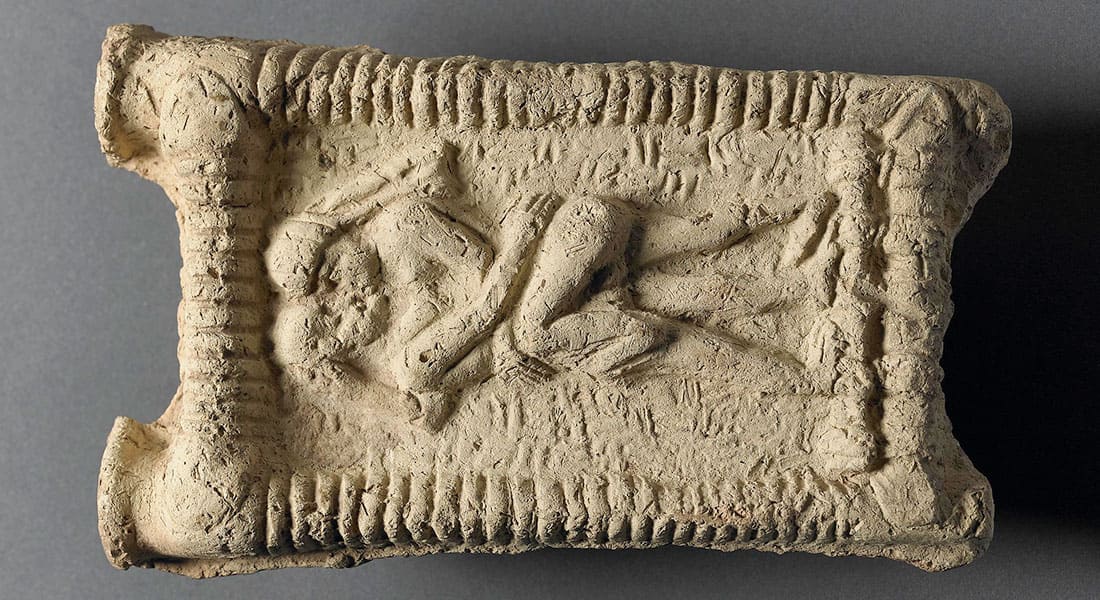Most studies have suggested that the earliest evidence of lip kissing originated in a specific geographical location in India 1,500 BC, from where it may have spread to other regions. However, a new review paper found this style of kissing is also mentioned in clay tablets from Mesopotamia, predating India by a thousand years.

Sophie Lund Rasmussen from the University of Oxford and Troels Pank Arbøll from the University of Copenhagen looked at the writing on clay tablets from Mesopotamia. They found mentions of kissing as early as 2,500 BC. Kissing was done after sexual acts, with couples focused on lips as opposed to kissing other body parts, the researchers said.
Kissing could have also played an unintentional role in spreading microorganisms much faster, specifically the herpes simplex virus 1. There are some Mesopotamian texts that describe an illness with similar symptoms. However, the researchers aren’t sure if this was the same virus, as ancient civilizations did health care differently than we do now.
“In ancient Mesopotamia, people wrote in cuneiform script on clay tablets. Many thousands of these clay tablets have survived to this day, and they contain clear examples that kissing was considered a part of romantic intimacy in ancient times,” Pank Arbøll, an expert on the history of medicine in Mesopotamia, said in a statement.
The history of kissing
Evolutionary anthropologists suggest that lip kissing evolved to assess a mate’s compatibility through chemical cues in saliva or breath. Kissing may also serve to create emotional attachment and enhance sexual arousal. Lip kissing has also been found in chimps and bonobos, which means it could be much older than evidence in humans.
In their study, the researchers looked at scripts in Mesopotamia called cuneiform — inscribed in clay tablets with reeds cut into a little triangular shape. While earlier texts referred just to administrative practices, later ones included other topics. Some of the earliest sources mentioning lip kissing are found in mythological texts from 2,500 BC.

In the Barton Cylinder, a clay artifact inscribed with cuneiform that describes a Sumerian myth of creation, two deities are said to have sex and kiss: “with the goddess Ninhursag, he had intercourse. He kissed her. The semen of seven twins he impregnated into her womb,” it reads. Other sources also form the impression that kissing in relation to sex and family was part of everyday life.
However, romantic and sexual kissing in the open street was likely frowned upon, and it’s likely that it was preferably practiced between married couples, the researchers said. They believe society had a set of social norms regarding ideal behavior. But the fact that such norms existed suggests that kissing was a widespread practice.
“Considering the wide geographical distribution of the romantic-sexual kiss in ancient times, we believe that the kiss had multiple origins. And even if one were to search for a single point from where the kiss originated, one would have to find it millennia ago in prehistoric times,” the researchers wrote in a recent blog post in The Conversation.
This then raises the question of how widely was romantic lip kissing used in the ancient world, especially in societies that can’t be traced as they didn’t use writing. The researchers believe kissing was likely known in most ancient cultures due to cultural contact — but this is more of a speculation. This shows there’s still much more to tell about the history and culture of kissing.
The study was published in the journal Science.



